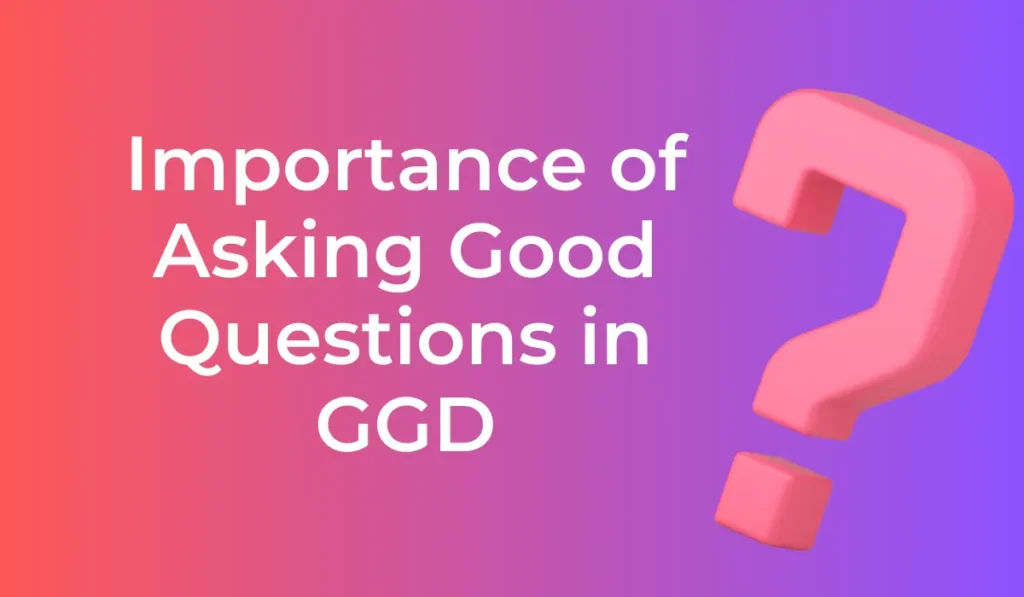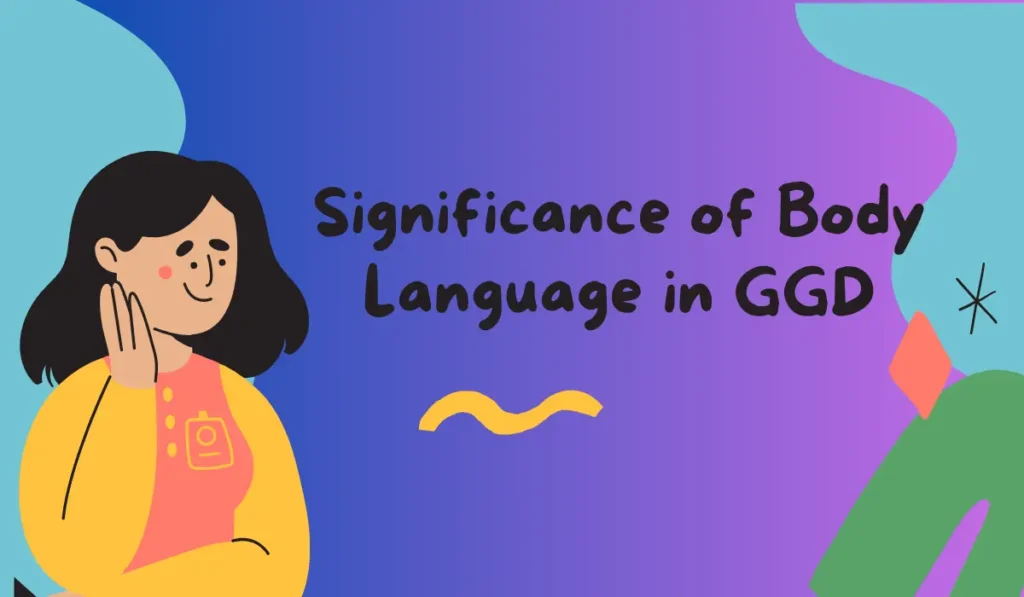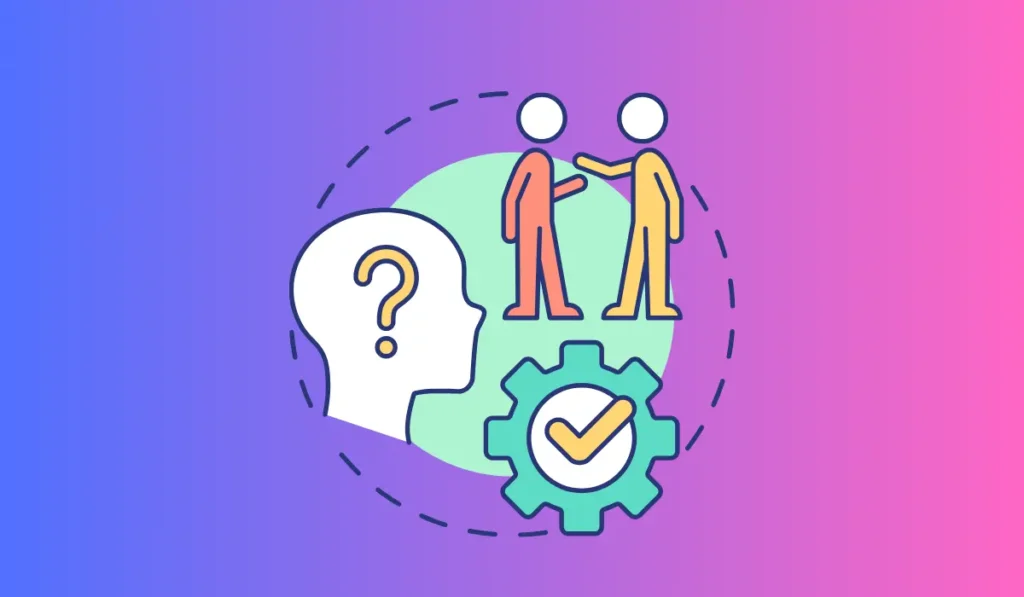Guided Group Discussion is a structured form of discussion where a group of individuals come together to exchange ideas, opinions, and perspectives on a specific topic.
The purpose of a Guided Group Discussion is to encourage active engagement, promote critical thinking, and foster collaborative problem-solving among the participants.
It is commonly used in educational settings, professional development programs, and recruitment processes to assess communication skills, teamwork, and decision-making abilities.
Benefits of Guided Group Discussion

An effective method that can help individuals improve their communication skills is guided group discussion. Guided group discussion provides a structured and supportive environment for participants to engage in meaningful conversations and develop their communication abilities.
- The key benefit of guided group discussion is that it encourages active participation. In a guided group discussion, participants are encouraged to share their thoughts, ideas, and opinions on a specific topic.
- Another advantage is that it fosters collaboration and teamwork. In a guided group discussion, participants are encouraged to work together to find solutions, make decisions, or explore different possibilities.
- It also provides a platform for individuals to practice and refine their communication skills. Through active participation, participants can improve their ability to articulate their thoughts and ideas clearly and concisely.
- Participants can also learn to structure their arguments effectively and persuasively present their viewpoints.
- Moreover, it allows individuals to receive feedback from their peers and facilitators, which can help them identify areas for improvement and refine their communication style.
Engage Members in a Guided Discussion
First and foremost, it is essential to establish clear objectives for the discussion. What do you hope to achieve? What topics or issues do you want to explore?
By setting clear goals, you can provide a sense of direction and purpose to the discussion, which will help to engage participants.
Once you have established the objectives, it is important to communicate them effectively to the group. Clearly explain the purpose of the discussion and what you hope to achieve.
Creating a safe and inclusive environment is also vital for engaging members of the group. Ensure that everyone feels comfortable expressing their thoughts and opinions without fear of judgment or criticism. Encourage active listening and respect for different perspectives.
To keep the discussion flowing smoothly, it is helpful to use open-ended questions. These questions encourage participants to think critically and express their ideas in more depth.
Avoid asking yes or no questions, as they tend to limit discussion and discourage active participation. Instead, ask questions that encourage reflection and invite different viewpoints.
Transitional phrases can also be useful in guiding the flow of the discussion. Phrases such as “building on that point,” “moving on to the next topic,” or “let’s hear from someone else” can help transition between ideas and ensure that everyone has an opportunity to contribute.
Active facilitation is another key to engaging members in a guided discussion. As the facilitator, it is your role to guide the conversation, ensure that everyone has a chance to speak, and keep the discussion focused on the objectives.
Encouraging participants to take ownership of the discussion can also enhance engagement. Allow individuals to lead certain parts of the conversation or take on specific roles, such as note-taker or timekeeper.
Lastly, it is essential to provide closure to the discussion. Summarize the key points that were discussed and highlight any insights or conclusions that were reached. This helps participants feel a sense of accomplishment and ensures that the discussion ends on a positive note.
Importance of Asking Good Questions in GGD

Here I will explore the significance of asking good questions in guided group discussions and how they contribute to the overall success of the session.
- Firstly, good questions serve as catalysts for engaging discussions. When participants are presented with thought-provoking questions, they are more likely to become actively involved in the conversation.
- Secondly, good questions promote critical thinking. By posing questions that challenge participants to analyze, evaluate, and synthesize information, facilitators can help develop their critical thinking skills.
- Good questions require individuals to think beyond surface-level responses and delve into the underlying concepts and principles. This encourages participants to examine different angles, consider alternative viewpoints, and develop well-reasoned arguments.
- Furthermore, good questions facilitate a deeper understanding of the topic at hand. By asking questions that encourage participants to explore the subject matter in greater detail, facilitators can help them gain a comprehensive understanding of the topic.
- Good questions prompt participants to examine different aspects, explore various perspectives, and connect the dots between different ideas. This not only broadens their knowledge but also helps them develop a holistic understanding of the subject matter.
- Moreover, good questions foster a collaborative learning environment. When participants are encouraged to ask questions of their own, it creates an inclusive atmosphere where everyone’s input is valued.
Role of the Group Leader in Guided Discussions
The role of the group leader is crucial in ensuring a productive and meaningful conversation. The group leader serves as a facilitator, guiding the discussion and creating an environment that encourages active participation from all members.
First and foremost, the group leader must establish clear objectives for the discussion. This involves identifying the topic or issue to be discussed and setting specific goals that the group aims to achieve.
Once the objectives are established, the group leader must create an inclusive and respectful environment. This includes setting ground rules for the discussion, such as allowing everyone to speak without interruption and encouraging open-mindedness and active listening.
During the discussion, the group leader plays a crucial role in facilitating the conversation. This includes guiding the flow of the discussion, ensuring that all participants have an opportunity to contribute, and managing any conflicts or disagreements that may arise.
The leader must possess strong communication skills. The group leader should also be an active listener, paying attention to both verbal and non-verbal cues from participants and responding appropriately.
The group leader should also be able to manage time effectively, ensuring that the discussion stays on schedule and that all objectives are met within the allotted time frame.
Furthermore, the group leader should be knowledgeable about the topic being discussed. While they do not need to be an expert, having a good understanding of the subject matter allows the leader to provide relevant information and insights, as well as ask probing questions that encourage deeper analysis.
Lastly, the group leader must be able to summarize and synthesize the key points and ideas that emerge from the discussion. By summarizing the discussion, the group leader helps to consolidate the ideas and insights shared by the group, providing a sense of closure and ensuring that the discussion has a tangible outcome.
Significance of Body Language in GGD

In any group discussion, whether it be in a professional setting or an academic environment, effective communication is key. While verbal communication is undoubtedly important, it is equally crucial to pay attention to nonverbal cues, particularly body language.
Body language can convey a wealth of information, often revealing more about a person’s thoughts and feelings than their words alone.
The primary reason why body language is significant is that it helps to establish rapport and build trust among participants. When individuals are engaged in a discussion, their body language can indicate their level of interest and attentiveness.
Conversely, crossed arms, fidgeting, or avoiding eye contact may suggest disinterest or disagreement. By being aware of these nonverbal cues, facilitators can gauge the level of participation and adjust their approach accordingly, ensuring that all participants feel heard and valued.
Furthermore, body language can also provide insights into the emotional state of individuals within the group. Facial expressions, gestures, and posture can reveal a range of emotions, such as happiness, frustration, or confusion.
Another aspect of body language that is particularly relevant in guided group discussions is the ability to read and respond to nonverbal cues from others. By observing the body language of fellow participants, individuals can gain a deeper understanding of their perspectives and reactions.
It is important to note that body language should be interpreted in conjunction with verbal communication, as they often complement each other. While body language can provide valuable insights, it is essential to consider the context and individual differences.
Q&A
1. What is a guided group discussion?
A guided group discussion is a structured conversation among a group of individuals on a specific topic, facilitated by a moderator.
2. What is the purpose of a guided group discussion?
The purpose of a guided group discussion is to encourage participants to share their thoughts, ideas, and perspectives on a particular topic, and to collectively arrive at a conclusion or solution.
3. How is a guided group discussion different from a regular group discussion?
In a guided group discussion, a moderator provides specific guidelines, prompts, or questions to steer the conversation in a particular direction, whereas a regular group discussion is more open-ended.
4. How many participants are usually involved in a guided group discussion?
The number of participants in a guided group discussion can vary, but it is typically between 5 to 10 individuals.
Conclusion
Guided group discussions are an effective method of facilitating meaningful conversations and promoting collaborative learning. They provide a structured platform for individuals to share their thoughts, ideas, and perspectives on a specific topic. By following a set of guidelines and rules, participants can engage in a productive and respectful discussion that encourages active listening, critical thinking, and problem-solving. It also fosters teamwork, enhances communication skills, and promotes a deeper understanding of the subject matter.


